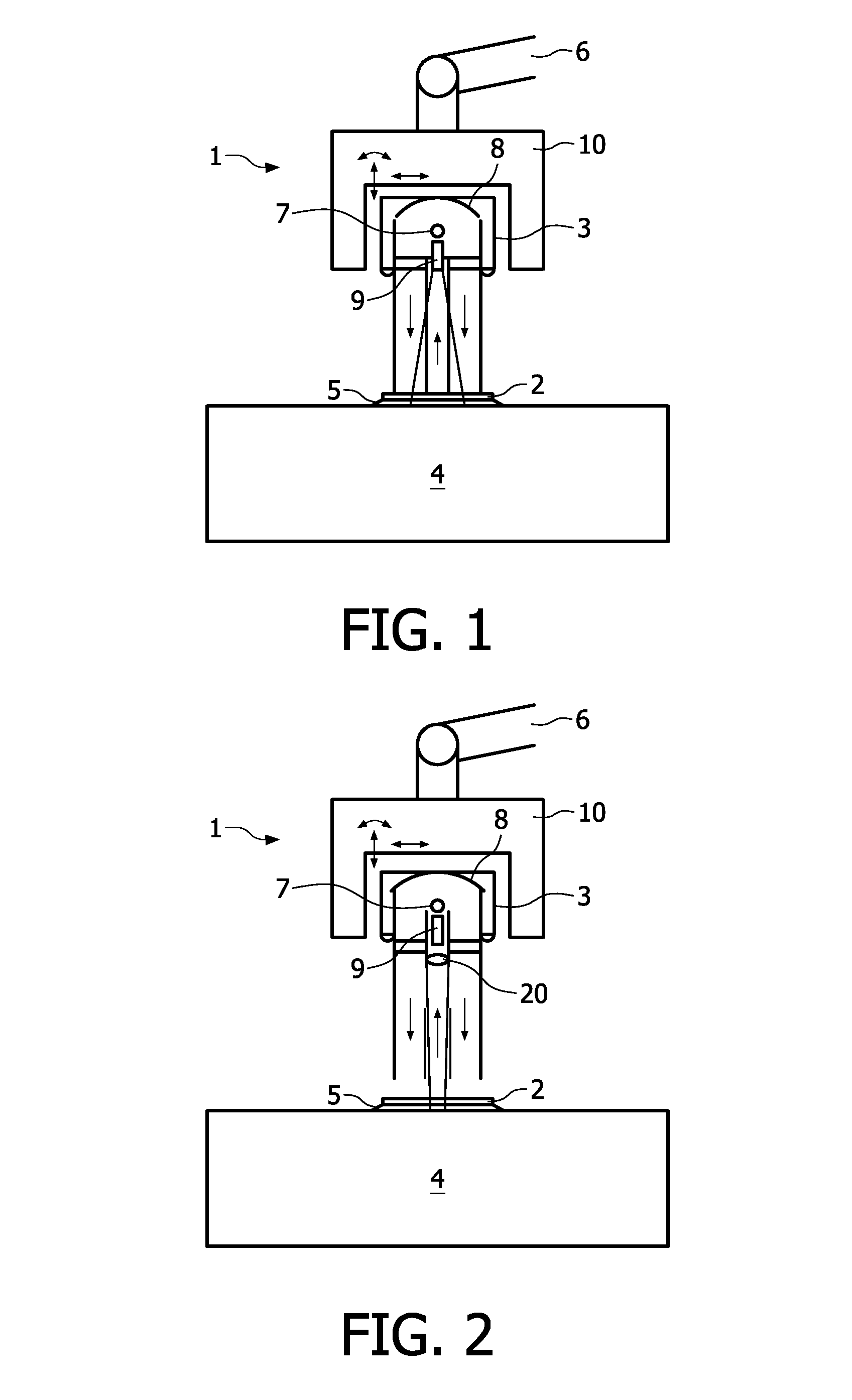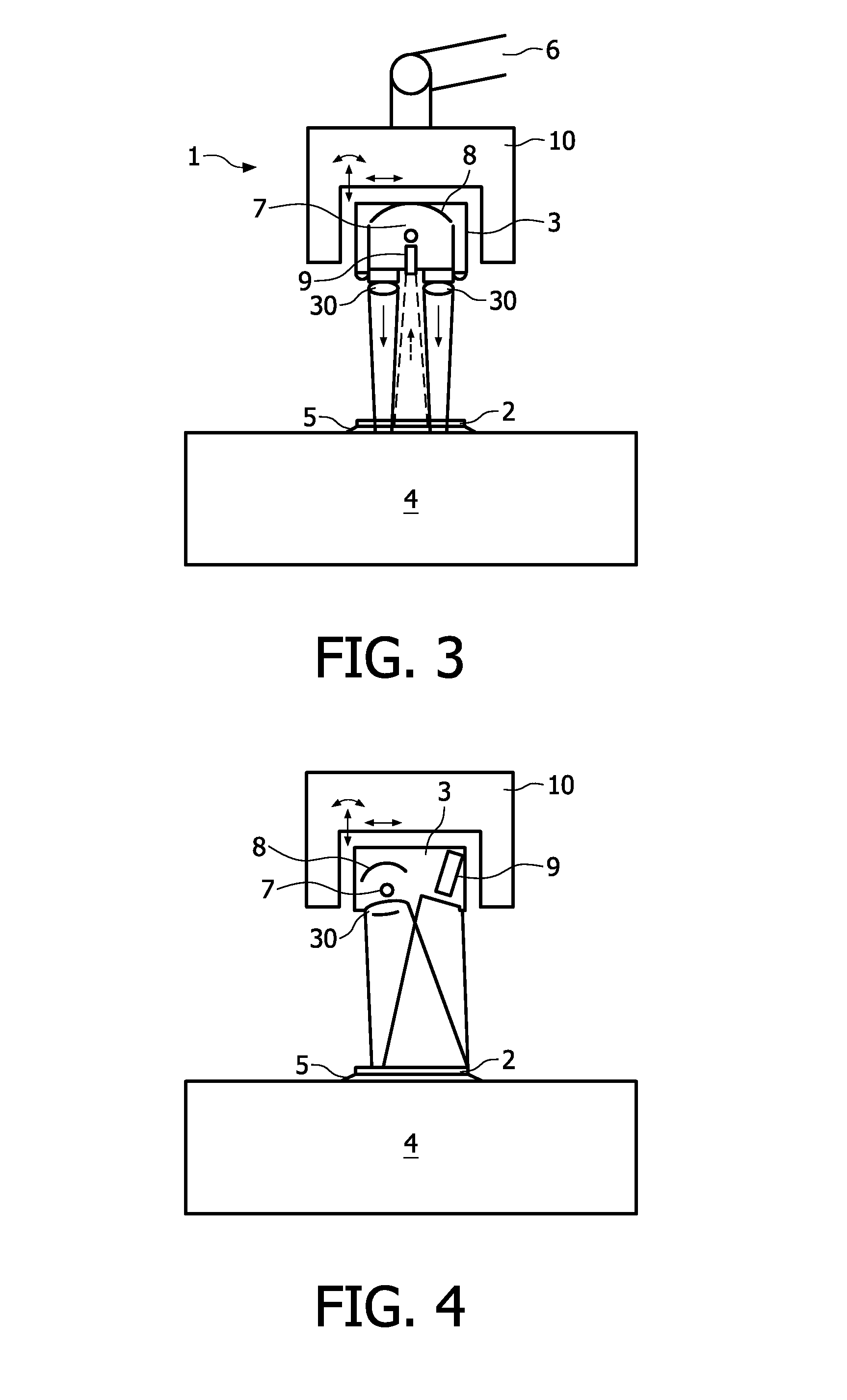Apparatus for optical body analysis
a technology of optical body and apparatus, applied in the field of medical devices, can solve the problems of little mechanical strength, and achieve the effects of safer and lower cost, more accurate measurements, and shorter measurement times
- Summary
- Abstract
- Description
- Claims
- Application Information
AI Technical Summary
Benefits of technology
Problems solved by technology
Method used
Image
Examples
Embodiment Construction
[0024]In reference to FIG. 1, an apparatus 1 comprises an optical coupler 2 and an illumination and detection head 3.
[0025]The optical coupler 2 is positioned on the outer layer of the body portion 4 to analyze. The outer layer is for example the patient's skin. Optical coupler 2 may be a piece of transparent material with a well defined smooth surface. Optical couplers are typically used to correct for the skin roughness so that the relief of the illuminated surface is known when the skin is illuminated. This makes it easier to predict how much light is reflected and how much light penetrates the skin. Optical coupler 2 can also be either associated with an index matching fluid or gel 5 that is placed between optical coupler 2 and the skin 4 to prevent any air bubbles being trapped at the interface skin-coupler. The index matching fluid 5 minimizes reflection of light passing through optical coupler 2 and the skin 4 or at the interface between the two. The fluid or gel 5 could also...
PUM
| Property | Measurement | Unit |
|---|---|---|
| refractive index | aaaaa | aaaaa |
| optical body analysis | aaaaa | aaaaa |
| pressure | aaaaa | aaaaa |
Abstract
Description
Claims
Application Information
 Login to View More
Login to View More - R&D
- Intellectual Property
- Life Sciences
- Materials
- Tech Scout
- Unparalleled Data Quality
- Higher Quality Content
- 60% Fewer Hallucinations
Browse by: Latest US Patents, China's latest patents, Technical Efficacy Thesaurus, Application Domain, Technology Topic, Popular Technical Reports.
© 2025 PatSnap. All rights reserved.Legal|Privacy policy|Modern Slavery Act Transparency Statement|Sitemap|About US| Contact US: help@patsnap.com



